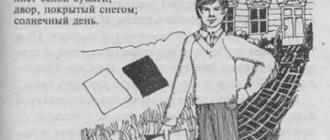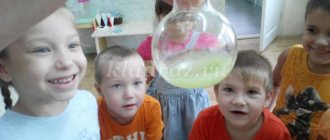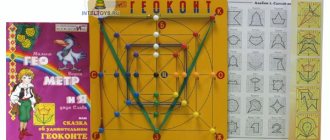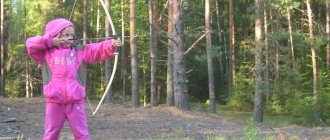Card index of experiments and experiments with air.
Experiments with air.
AIR is a mixture of gases, mainly nitrogen and oxygen, that forms the earth's atmosphere. Air is necessary for the existence of the vast majority of terrestrial living organisms: the oxygen contained in the air, during the process of respiration, enters the cells of the body, where the energy necessary for life is created. Of all the various properties of air, the most important is that it is necessary for life on Earth. The existence of humans and animals would be impossible without oxygen. But since breathing requires diluted oxygen, the presence of other gases in the air is also vital. We learn about what gases are in the air at school, and in kindergarten we will get acquainted with the properties of air.
"Games with balloons."
Goals:
introduce children to the fact that there is air inside a person and discover it; develop curiosity and attention; maintain interest in understanding the surrounding reality by asking problematic questions; develop coherent speech; activate the dictionary.
Equipment:
2 balloons.
Methodical techniques
: Invite children to look at 2 balloons.
Play with them. Which ball is more convenient to play with? Why? (with the one that is more inflated, because it easily bounces, “flies”, and falls smoothly).
Discuss the reason for the differences: one is elastic and the other is soft. What should be done with the second ball so that it is also good to play with? (inflate more). What's inside the ball? Where does the air come from? (he is exhaled).
The teacher shows how a person inhales and exhales air, placing his hand under the stream of air.
“Why does the wind appear?”
Target:
introduce children to the cause of wind, maintain interest in understanding the surrounding reality by asking problematic questions, and teach them to establish cause-and-effect relationships.
Equipment:
Strips of paper.
Methodical techniques:
Invite children to blow on a strip of paper lightly, strongly, moderately.
Conclusion:
if you blow strongly on a strip of paper, then the air movement will be very fast, you will get “windy”, and if you blow lightly, the air movement will be weak, you will get
"breeze". Wind is the movement of air.
"Spinner".
Target:
Reveal that air has elasticity. Understand how air power (motion) can be used.
Material:
Pinwheel, materials for making it for each child: paper, scissors, sticks, carnations.
Methodical techniques:
An adult shows children a fidget spinner in action. Then he discusses with them why it spins (the wind hits the blades, which are turned at an angle towards it, and this causes the turntable to move).
An adult invites children to make a turntable according to an algorithm, examine and discuss the features of its design.
Then he organizes games with a spinner on the street; Children observe under what conditions it spins faster.
"Rocket Ball".
Target:
Reveal that air has elasticity. Understand how air power (motion) can be used.
Material:
Balloons.
Methodical techniques:
Children, with the help of an adult, inflate the balloon, release it and pay attention to the trajectory and duration of its flight.
They find out that in order for the ball to fly longer, it is necessary to inflate it more: the air escaping from the “neck” forces the ball to move in the opposite direction.
An adult tells the children that the same principle is used in jet engines.
"Parachute".
Target:
Reveal that air has elasticity. Understand how air power (motion) can be used.
Materials:
Parachute, toy men, container with sand.
Methodical techniques:
Children examine the parachute and test it in action. An adult invites children to lower a toy man with or without a parachute.
Children lower the little man from the chair onto the floor and then into the sand, paying attention to the dent in the sand after the little man is lowered. They draw a conclusion about the force of the impact in both cases. They find out why the descent with a parachute is slower,
and the impact is weaker (air pressure restrains the fall); what needs to be done to make the parachute descend more slowly (you need to increase the canopy of the parachute).
Children remember that as the canopy increases, the air resistance to the parachute will be greater and the fall will be slower; as the canopy decreases, the air resistance to the parachute will be less and the fall will be faster.
"Air Movement"
Target:
Show children that although air is invisible, it can be felt.
Methodical techniques
: Wave your hand near your face. What does it feel like? Blow on your hands. How did you feel? All these sensations are caused by air movement.
Conclusion:
the air is not
“invisible”
; its movements can be felt when fanning your face.
«The air works."
Target:
Give children the idea that air can move objects (sailboats, hot air balloons, etc.).
Material:
plastic bath, basin with water, sheet of paper; a piece of plasticine, a stick, balloons.
Methodical techniques:
Grandfather Know invites children to look at the balloons. What's inside them? What are they filled with? Can air move objects? How can you check this? Launches an empty plastic bath into the water and asks the children: “Try to make it float.” Children blow on it. What can you come up with to make the boat float faster? Attaches the sail and makes the boat move again. Why does a boat move faster with a sail? There is more air pressure on the sail, so the bath moves faster.
What other objects can we make move? How can you make a balloon move? The balloons are inflated and released, and the children watch their movement. Why is the ball moving? Air escapes from the ball and causes it to move.
Children play independently with a boat and a ball.
“The method of detecting air, air is invisible. Experience 1."
Target:
Prove that the jar is not empty, it contains invisible air.
Materials:
An empty 1.0 liter glass jar, 2 paper napkins, a small piece of plasticine, a pan of water.
Methodical techniques
: Let's try putting a paper napkin in a pan of water. Of course she got wet. Now, using plasticine, we will secure exactly the same napkin inside the jar at the bottom. Turn the jar upside down and carefully lower it into a pan of water to the very bottom. The water completely covered the jar. Carefully remove it from the water. Why did the napkin remain dry? Because there is air in it, it does not let water in. It can be seen. Again, in the same way, lower the jar to the bottom of the pan and slowly tilt it. Air flies out of the can in a bubble.
Conclusion:
The jar only seems empty, but in fact there is air in it. The air is invisible.
“The method of detecting air, air is invisible. Experience 2"
Target:
Prove that the bag is not empty, it contains invisible air.
Materials:
Durable transparent plastic bag, small toys.
Methodical techniques
: Let's fill the empty bag with various small toys. The bag has changed its shape, now it is not empty, but full, with toys in it. Lay out the toys and expand the edges of the bag. He's swollen again, but we don't see anything in him. The bag appears empty. We begin to twist the bag from the side of the hole. As the bag is twisted, it swells and becomes convex, as if it is filled with something. Why? It is filled with invisible air.
Conclusion
: The bag only seems empty, but in fact there is air in it. The air is invisible.
“The invisible air is all around us, we breathe it in and out.”
Target:
To prove that there is invisible air around us that we inhale and exhale.
Materials:
Glasses of water in the amount corresponding to the number of children, cocktail straws in the amount corresponding to the number of children, strips of light paper (1.0 x 10.0 cm) in the amount corresponding to the number of children.
Methodical techniques
: Carefully take a strip of paper by the edge and bring the free side closer to the spouts. We begin to inhale and exhale. The strip is moving. Why? Do we inhale and exhale air that moves the paper strip? Let's check, try to see this air. Take a glass of water and exhale into the water through a straw. Bubbles appeared in the glass. This is the air we exhale. The air contains many substances that are beneficial for the heart, brain and other human organs.
Conclusion:
We are surrounded by invisible air, we inhale and exhale it. Air is essential for human life and other living beings. We can't help but breathe.
"Air can move"
Target
: Prove that invisible air can move.
Materials
: A transparent funnel (you can use a plastic bottle with the bottom cut off), a deflated balloon, a pan of water lightly tinted with gouache.
Methodical techniques:
Let's consider a funnel. We already know that it only seems empty, but in fact there is air in it. Is it possible to move it? How to do it? Place a deflated balloon on the narrow part of the funnel and lower the funnel into the water with its bell. As the funnel is lowered into the water, the ball inflates. Why? We see water filling the funnel. Where did the air go? The water displaced it, the air moved into the ball. Let's tie the ball with a string and we can play with it. The ball contains air that we moved from the funnel.
Conclusion:
Air can move.
“Air does not move from a closed space».
Target
: Prove that air cannot move from a closed space.
Materials:
An empty 1.0 liter glass jar, a glass saucepan with water, a stable foam boat with a mast and a paper or fabric sail, a transparent funnel (you can use a plastic bottle with the bottom cut off), a deflated balloon.
Methodical techniques
: The ship floats on the water. The sail is dry. Can we lower the boat to the bottom of the pan without getting the sail wet? How to do it? We take the jar, hold it strictly vertically with the hole down and cover the boat with the jar. We know that there is air in the can, therefore the sail will remain dry. Let's carefully lift the jar and check it. Let's cover the boat with the can again and slowly lower it down. We see the boat sink to the bottom of the pan. We also slowly raise the can, the boat returns to its place. The sail remained dry! Why? There was air in the jar, it displaced the water. The ship was in a bank, so the sail could not get wet. There is also air in the funnel. Place a deflated balloon on the narrow part of the funnel and lower the funnel into the water with its bell. As the funnel is lowered into the water, the ball inflates. We see water filling the funnel. Where did the air go? The water displaced it, the air moved into the ball. Why did water displace water from the funnel, but not from the jar? The funnel has a hole through which air can escape, but the jar does not. Air cannot escape from a closed space.
Conclusion
: Air cannot move from a closed space.
"The air is always in motion."
Target:
Prove that air is always in motion.
Materials: p
strips of light paper (1.0 x 10.0 cm) in an amount corresponding to the number of children, illustrations: windmill, sailboat, hurricane, etc., hermetically sealed jar with fresh orange or lemon peels (you can use a bottle of perfume) .
Methodical techniques:
Carefully take a strip of paper by the edge and blow on it. She leaned away. Why? We exhale air, it moves and moves the paper strip. Let's blow on our hands. You can blow harder or weaker. We feel strong or weak air movement. In nature, such tangible movement of air is called wind. People have learned to use it (show illustrations), but sometimes it is too strong and causes a lot of trouble (show illustrations). But there is not always wind. Sometimes there is no wind. If we feel the movement of air in a room, it is called a draft, and then we know that a window or window is probably open. Now in our group the windows are closed, we don’t feel any air movement. I wonder if there is no wind and no draft, then the air is still? Consider a hermetically sealed jar. It contains orange peels. Let's smell the jar. We don't smell it because the jar is closed and we can't inhale air from it (air doesn't move from a closed space). Will we be able to inhale the smell if the jar is open, but far from us? The teacher takes the jar away from the children (approximately 5 meters) and opens the lid. There is no smell! But after a while everyone smells the oranges. Why? The air from the can moved around the room.
Conclusion:
Air is always moving, even if we don't feel the wind or draft.
“Air is contained in various objects.”
Target
: Prove that air is not only around us, but also in different objects.
Materials
: Glasses of water in an amount corresponding to the number of children, cocktail straws in an amount corresponding to the number of children, a glass pan with water, a sponge, pieces of brick, lumps of dry earth, refined sugar.
Methodical techniques
: Take a glass of water and exhale into the water through a straw. Bubbles appeared in the glass. This is the air we exhale. In water we see air in the form of bubbles. Air is lighter than water, so bubbles rise. I wonder if there is air in different objects? We invite children to examine the sponge. There are holes in it. You can guess that there is air in them. Let's check this by lowering the sponge into water and pressing lightly on it. Bubbles appear in the water. This is air. Consider brick, earth, sugar. Do they have air? We lower these objects one by one into the water. After some time, bubbles appear in the water. This is air coming out of objects; it has been replaced by water.
Conclusion
: Air is not only in an invisible state around us, but also in various objects.
"Air has volume."
Target:
Prove that air has a volume that depends on the space in which it is enclosed.
Materials:
Two funnels of different sizes, large and small (you can use plastic bottles with the bottom cut off), two identical deflated balloons, a pan of water.
Methodical techniques:
Let's take two funnels, a large one and a small one. We will put identical deflated balloons on their narrow parts. Lower the wide part of the funnels into the water. The balloons did not inflate equally. Why? In one funnel there was more air - the ball turned out to be large, in the other funnel there was less air - the ball inflated small. In this case, it is correct to say that in a large funnel the volume of air is greater than in a small one.
Conclusion:
If we consider the air not around us, but in some specific space (funnel, jar, balloon, etc.), then we can say that the air has volume. You can compare these volumes by size.
“Air has a weight that depends on its volume.”
Target
: Prove that air has a weight that depends on its volume.
Materials:
Two identical deflated balloons, scales with two bowls.
Methodical techniques:
Let's put an uninflated identical balloon on the scales. The scales have balanced. Why? The balls weigh the same! Let's inflate one of the balloons. Why did the ball swell, what is in the ball? Air! Let's put this ball back on the scale. It turned out that now he outweighed the uninflated balloon. Why? Because the heavier ball is filled with air. This means that air also has weight. Let's inflate the second balloon too, but smaller than the first. Let's put the balls on the scales. The big ball outweighed the small one. Why? It contains more air!
Conclusion:
Air has weight. The weight of air depends on its volume: the larger the volume of air, the greater its weight.
“The volume of air depends on the temperature.”
Target:
Prove that the volume of air depends on temperature.
Materials:
A glass test tube, hermetically sealed with a thin rubber film (from a balloon). The test tube is closed in the presence of children, a glass with hot water, a glass with ice.
Methodical techniques:
Let's consider a test tube. What's in it? Air. It has a certain volume and weight. Close the test tube with a rubber film, not stretching it too much. Can we change the volume of air in a test tube? How to do it? It turns out we can! Place the test tube in a glass of hot water. After some time, the rubber film will become noticeably convex. Why? After all, we did not add air to the test tube, the amount of air did not change, but the volume of air increased. This means that when heated (increasing temperature), the volume of air increases. Take the test tube out of the hot water and place it in a glass with ice. What do we see? The rubber film has noticeably retracted. Why? After all, we did not release the air, its quantity again did not change, but the volume decreased. This means that when cooling (temperature decreases), the volume of air decreases.
Conclusion:
The volume of air depends on the temperature. When heated (temperature increases), the volume of air increases. When cooling (temperature decreases), the volume of air decreases.
"Air helps fish swim."
Target:
Explain how a swim bladder filled with air helps fish swim.
Materials:
A bottle of sparkling water, a glass, several small grapes, illustrations of fish.
Methodical techniques
: Pour sparkling water into a glass. Why is it called that? There are a lot of small air bubbles in it. Air is a gaseous substance, so water is carbonated. Air bubbles rise quickly and are lighter than water. Let's throw a grape into the water. It is slightly heavier than water and will sink to the bottom. But bubbles, like small balloons, will immediately begin to settle on it. Soon there will be so many of them that the grape will float up. The bubbles on the surface of the water will burst and the air will fly away. The heavy grape will sink to the bottom again. Here it will again become covered with air bubbles and float up again. This will continue several times until the air is “exhausted” from the water. Fish swim using the same principle using a swim bladder.
Conclusion:
Air bubbles can lift objects in the water. Fish swim in water using a swim bladder filled with air.
“There is air in an empty bottle.”
Target:
Prove that there is air in an empty bottle.
Materials
: 2 plastic bottles, 2 funnels, 2 glasses (or any other identical containers with water), a piece of plasticine.
Methodical techniques
: Insert a funnel into each bottle. Cover the neck of one of the bottles around the funnel with plasticine so that there are no gaps left. We start pouring water into bottles. All the water from the glass was poured into one of them, and very little water spilled into the other (where the plasticine is), all the rest of the water remained in the funnel. Why? There is air in the bottle. Water flowing through the funnel into the bottle pushes it out and takes its place. The displaced air exits through the gaps between the neck and the funnel. There is also air in a bottle sealed with plasticine, but there is no way for it to escape and give way to water, so the water remains in the funnel. If you make at least a small hole in the plasticine, then the air from the bottle can escape through it. And water from the funnel will flow into the bottle.
Conclusion:
The bottle only seems empty. But there is air in it.
"Floating Orange"
Target:
Prove that there is air in the orange peel.
Materials:
2 oranges, large bowl of water.
Methodical techniques:
Place one orange in a bowl of water. He will float. And even if you try really hard, you won’t be able to drown him. Peel the second orange and put it in water. The orange has drowned! How so? Two identical oranges, but one drowned and the other floated! Why? There are a lot of air bubbles in the orange peel. They push the orange to the surface of the water. Without the peel, the orange sinks because it is heavier than the water it displaces.
Conclusion:
An orange does not sink in water because its peel contains air and holds it on the surface of the water.
Lesson No. 13 “About air”
Film textbook "The World Around You" 2nd grade
Lesson type:
combined
Target:
— formation of a holistic picture of the world and awareness of man’s place in it based on the unity of rational-scientific knowledge and emotional and value-based understanding of the educational personal experience of communicating with people and nature;
Tasks:
Subject
They will learn to talk about air pollution and protection using a diagram.
They will have the opportunity to learn to notice and appreciate the beauty of nature.
Metasubject
Regulatory UUD:
Understand the learning objective of the lesson and strive to complete it;
- take into account the action guidelines identified by the teacher in the new educational material.
Cognitive UUD:
carry out analysis of objects highlighting essential and non-essential features
Construct a speech utterance; make comparisons; generalize i.e. highlight the general on the basis of essential features.
Communication UUD:
Construct statements that are understandable to your partner; to ask questions.
formulate your own opinion and position.
Personal
— educational and cognitive interest in new educational material;
-the ability to self-assess based on the criterion of success in educational activities
Main activities of students
- talk about the importance of air for plants, animals and humans;
-work in pairs: analyze diagrams showing sources of air pollution;
-describe the aesthetic impact of contemplating the sky on a person;
- observe the sky outside the window and talk about it, using mastered means of expression;
-find information about protecting the water of your native land.
Basic Concepts
Air. Oxygen. Carbon dioxide. Nitrogen.
Issues for discussion
What gases are included in air? What gas is in the air the most?
AIR COMPOSITION
Air is a mixture of gases: oxygen, carbon dioxide, nitrogen.
When living things breathe, they absorb oxygen from the air and release carbon dioxide.
PROPERTIES OF AIR
1.Is the air transparent or opaque? We see surrounding bodies through it. Let’s compare: a door or a book are opaque, other objects cannot be seen through them. This means the air is transparent.
2. Does air have color?
The cabinet is yellow, the chalkboard is brown, the indoor plants are green. But the air has neither these colors nor any other color. This means the air is colorless.
3.Does the air have a smell?
We noticed that different rooms smelled differently.
In a canteen, hairdresser, or pharmacy, particles of odorous substances mix with air particles, and we smell different odors. But clean air has no smell.
Practical work
What happens to air when it is heated and cooled?
Experience 1.
Purpose of the experience:
find out what happens to air when heated.
Progress of experience.
Let's take a flask with a tube. Let's put the tube in the water. Note that water does not enter the tube - air does not “let it in”. We will heat the flask. Air bubbles began to come out of the tube.
Conclusion:
When heated, air expands.
Experience 2.
Purpose of the experience:
find out what happens to air when it cools.
Progress of experience.
Place a cold, damp cloth on the flask. We will see how the water rises in the tube. The air seems to give up some of its space to the water.
Conclusion:
When air cools, it compresses.
Conclusion:
air is transparent, colorless, odorless, expands when heated, and contracts when cooled.
Presentation
Air PPT / 1002 Kb
Independent work.
Mark with a red pencil what pollutes the air, with a green pencil - what does not pollute. Explain your decision.
Information sources
:
A. A. Pleshakov textbook, workbook The world around us, grade 2 Moscow
"Enlightenment" 2014
“ Why
do we need air ?
Composition
and properties of air .
" Air
and its protection "
Experimenting “Air and its properties” in the preparatory group
- Guys, do you know what air is? Where is the air? Who breathes the air? Is it possible to live without air? Take a breath, what did you inhale?- Guys, when we inhale air, our lungs fill with air. We can feel it with you. Place your hands on your chest and inhale. Did you feel it?
- Now try not to breathe. Take a deep breath and hold your breath.
-What did you feel when you weren’t breathing? Were you comfortable? (Badly)
-What conclusion can be drawn?
Conclusion:
Air is necessary for breathing; a person cannot live without air.
The teacher invites the children to go to the tables with the equipment.
Experience No. 1 . Air is invisible, transparent, elastic, it can be felt and heard.
-Let's start researching. Take the package, what's in it? (it's empty)
-It can be folded several times. Look how thin he is. Now let's catch the air with the bag and hide it inside; to do this, twist the bag.
-Look, the bag is full of air, it has taken up all the space in the bag. Now let's untie the bag and let the air out of it. The package became thin again.
-Why? (He has deflated and there is no more air inside him)
— Now we have discovered the first secret of air:
Conclusion:
Air is invisible, transparent,
to see it, you need to catch it. And we were able to do it! We caught the air and locked it in a bag, and then released it.
- Catch the air in the bag again, touch it with your hands. How do you feel? (As if there is something in the bag, the bag creases when you press on it with your fingers, when you lower your fingers, it takes its shape again).
Conclusion:
air is elastic.
Air can be caught and locked where? - into a ball, sphere, tire. The trapped air softens the blow, so the tires are inflated with it; he makes the ball bounce. Compare how an inflated and an uninflated ball bounces.
- Let's make sure that there is air there. Take a stick and carefully pierce the bag. Bring it to your face and press on it. What do you feel? (The wind's blowing)
“So, if we can’t see air, what can we do?” (Feel)
Feel it like a light breeze on your face.
Take your fans and wave what you feel ( the wind)
-
What is wind?
( Wind is the movement of air)
-
Where is wind used by humans?
(in mills, on ships, a fan, a balloon, a kite, etc.)
- Air can not only be felt, but also heard. With what is this possible? ( Wind, pump, hair dryer, vacuum cleaner, etc. )
- Pick up rubber toys and press on them. Can you hear the air? Now try to pinch the hole with your finger. What's happening?
— I invite two of you who wish to play wind instruments
-What do we hear? (sounds)
-Children blow into the hole of the instrument, the air trembles and a sound is produced, sounds spread through the air. For example, on the Moon, where there is no air, you can’t hear anything, it’s useless to talk - sounds are not transmitted.
Where can we hear the air? (everywhere)
-Let's record everything that we have now learned in the table. First what did we do? What did you learn? ( Air invisible, transparent)
How did we know this?
That's right, Nastyusha paste the picture into the table. What other air? (elastic)
What helped us find out that the air is elastic? That’s right, Misha, come and fix the picture in the table.
What else have we learned? ( The air can be felt by the skin and heard).
What helped us here? This is also true, and we will paste this on the sign.
- What conclusion did we draw?
Conclusion:
The air is transparent, colorless, elastic. The air can be felt by the skin and heard.









